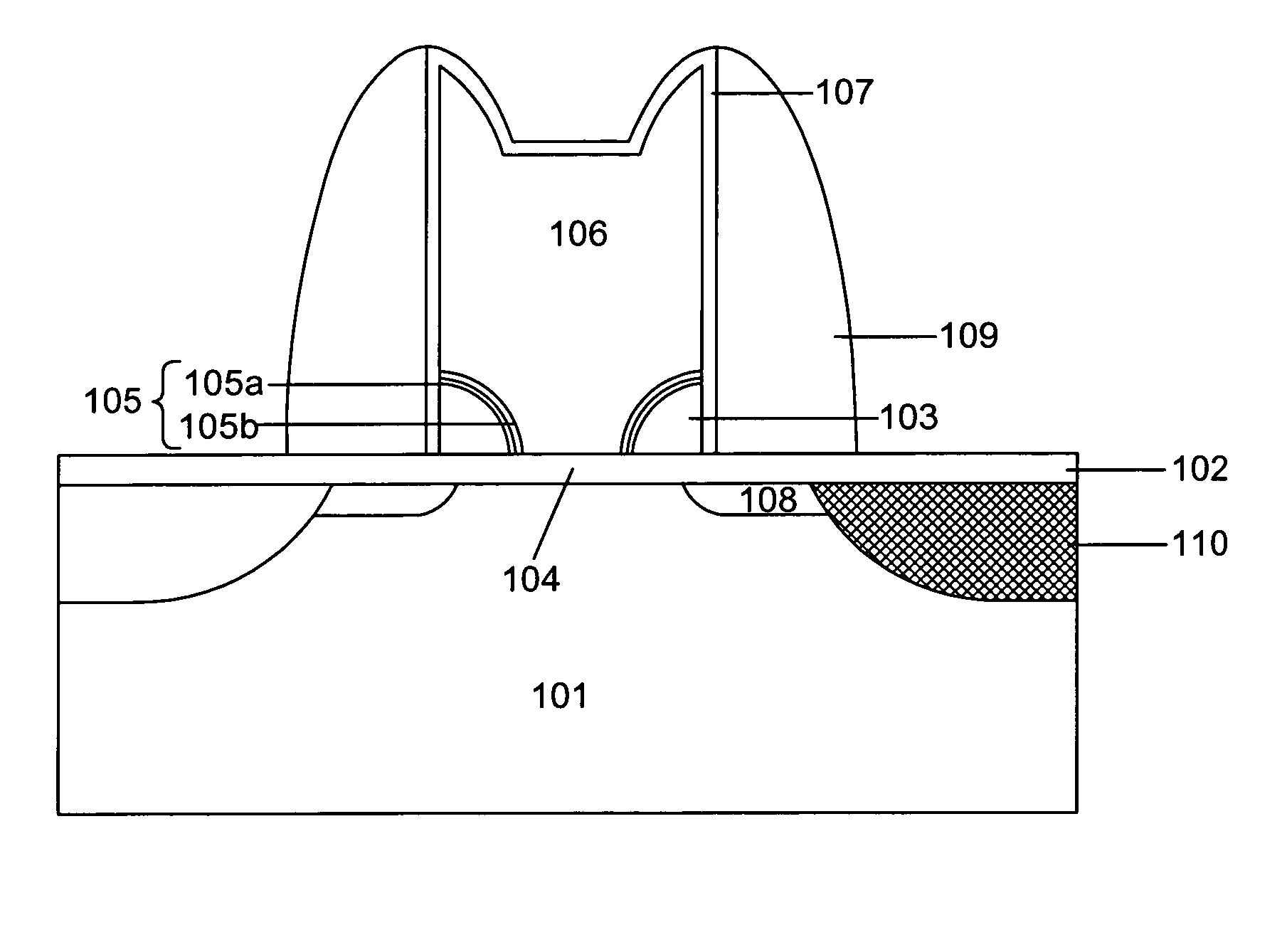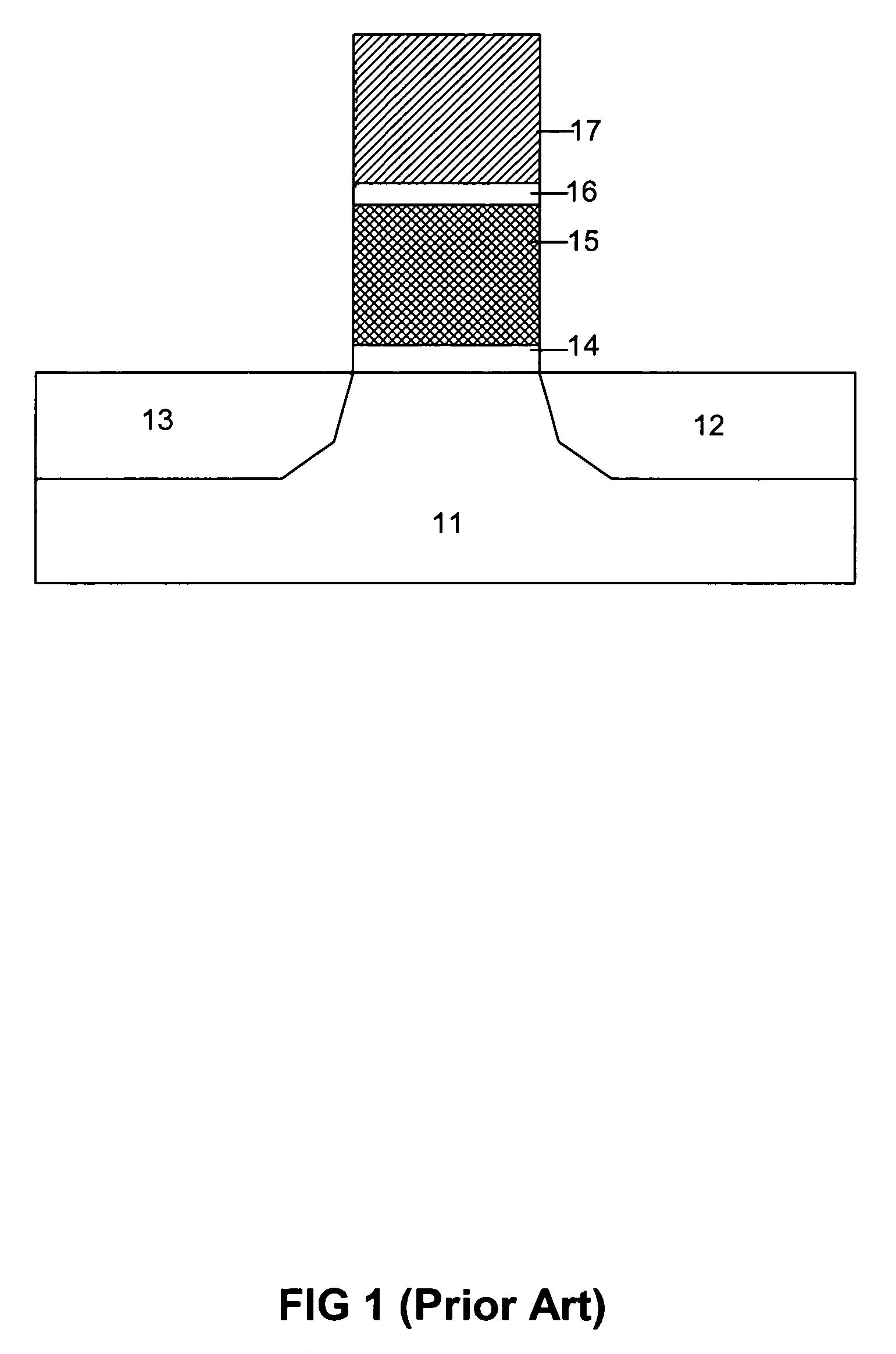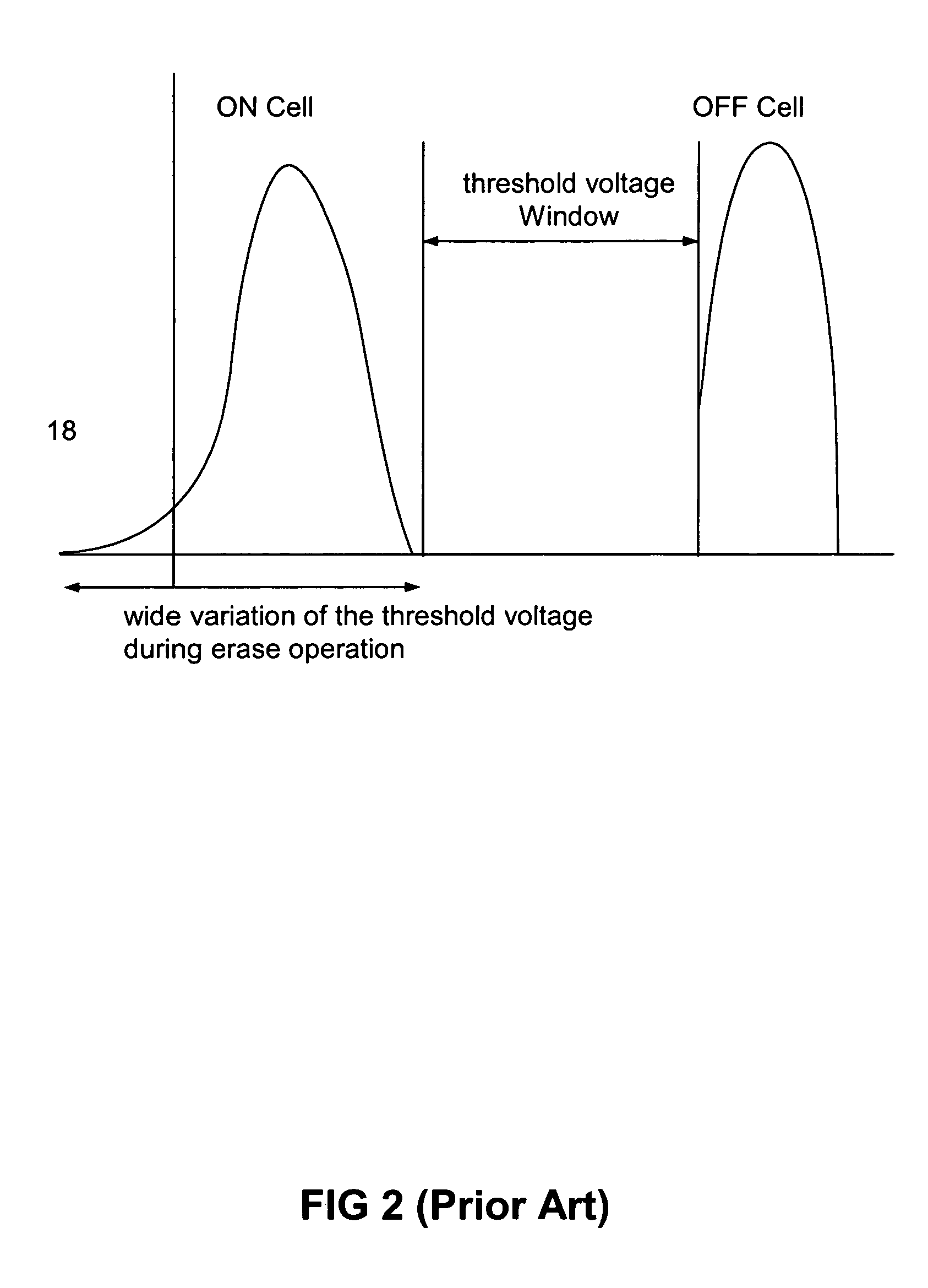Non-volatile flash memory device
a non-volatile, memory device technology, applied in semiconductor devices, electrical devices, instruments, etc., can solve the problems of interrupting the reading of other cells along the bit line, radically deteriorating the endurance characteristic of the sonos device, and affecting the retention characteristic of the memory device, so as to achieve efficient and effective program/erase operations
- Summary
- Abstract
- Description
- Claims
- Application Information
AI Technical Summary
Benefits of technology
Problems solved by technology
Method used
Image
Examples
Embodiment Construction
[0026]FIG. 3 is a cross-sectional view illustrating a non-volatile memory device having a sidewall floating gate which can control two bits with one transistor in accordance with the present invention.
[0027]Referring to FIG. 3, a gate oxide layer 104 is grown on a semiconductor substrate 101. A polysilicon gate 106 is positioned on the gate oxide layer 104. Sidewall floating gates 103 are placed on the bottom of the lateral faces of the polysilicon gate 106. Block oxide layers 105 is placed between the polysilicon gate 106 and the sidewall floating gates 103. The block oxide layers 105 comprise first block oxide layers 105a and second block oxide layers 105b. The first block oxide layers 105a have a thickness ranging between 50 Å and 250 Å and are made of a material selected from the group consisting of Al2O3 and Y2O3. The second block oxide layers 105b preferably have a thickness ranging between 20 Å and 150 Å and are made of SiO2. A tunnel oxide layer 102 is positioned between the...
PUM
 Login to View More
Login to View More Abstract
Description
Claims
Application Information
 Login to View More
Login to View More - R&D
- Intellectual Property
- Life Sciences
- Materials
- Tech Scout
- Unparalleled Data Quality
- Higher Quality Content
- 60% Fewer Hallucinations
Browse by: Latest US Patents, China's latest patents, Technical Efficacy Thesaurus, Application Domain, Technology Topic, Popular Technical Reports.
© 2025 PatSnap. All rights reserved.Legal|Privacy policy|Modern Slavery Act Transparency Statement|Sitemap|About US| Contact US: help@patsnap.com



